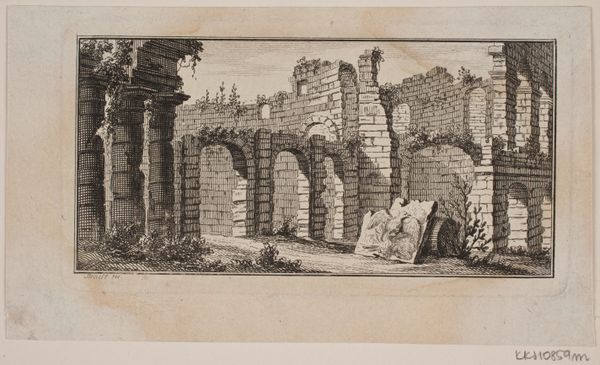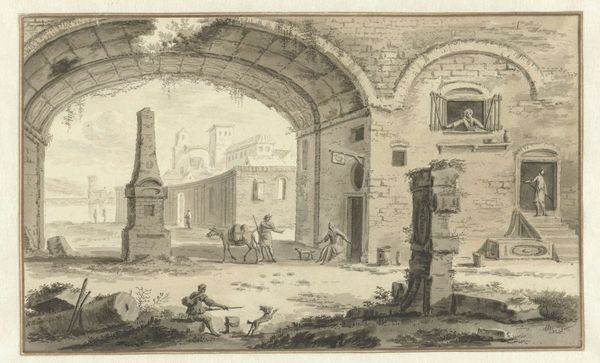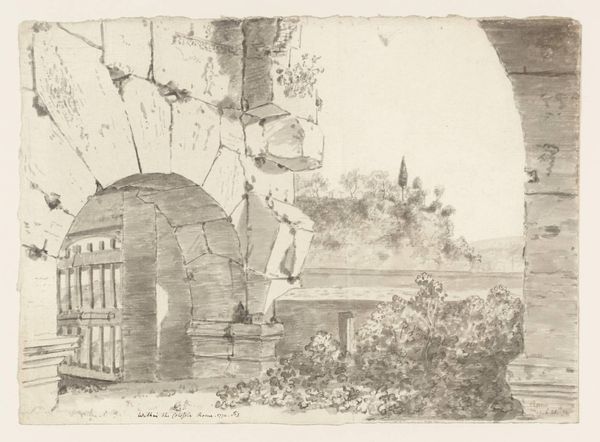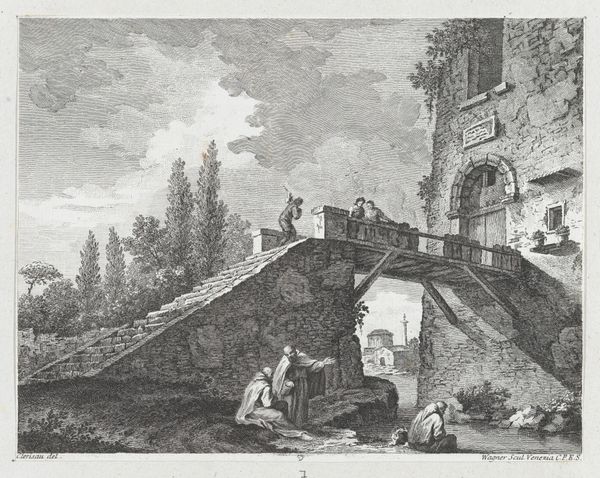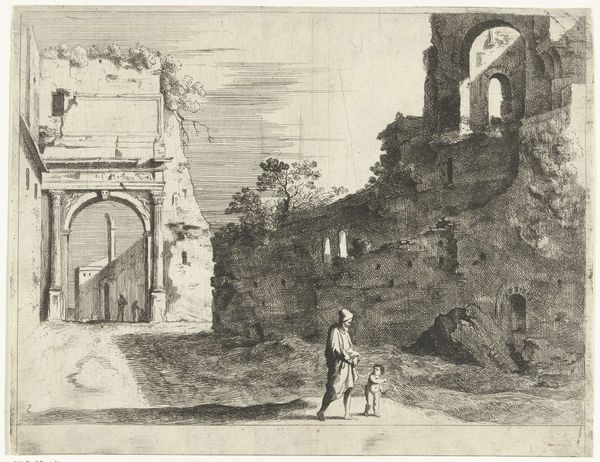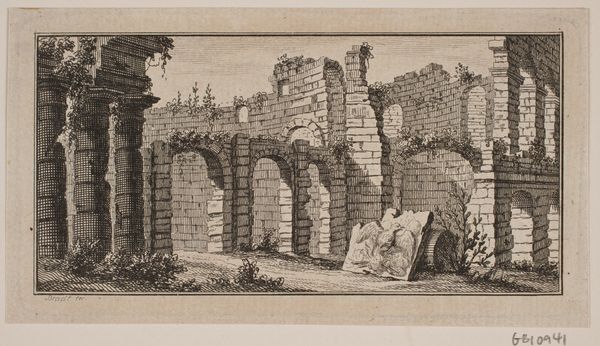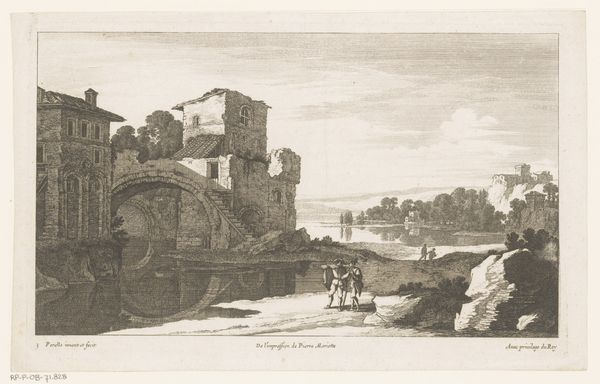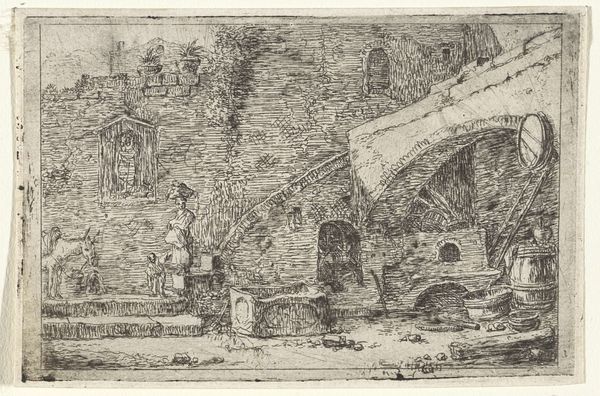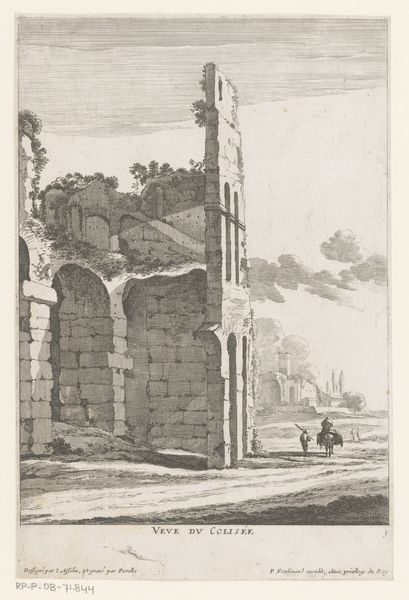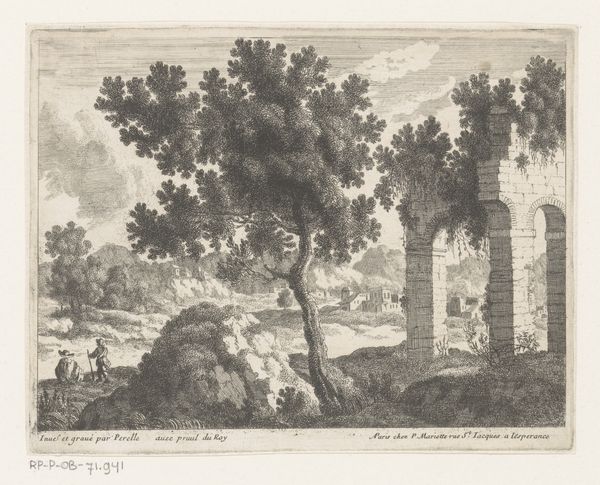
print, engraving, architecture
# print
#
old engraving style
#
landscape
#
romanesque
#
cityscape
#
engraving
#
architecture
Dimensions: height 78 mm, width 130 mm
Copyright: Rijks Museum: Open Domain
Curator: We're looking at "Colosseum te Rome," an engraving created around 1729 by Jacobus Baptist, housed here at the Rijksmuseum. Editor: Immediately, I’m struck by the somber mood despite the grand subject matter. The intricate cross-hatching creates deep shadows, emphasizing the Colosseum's state of decay. Curator: Indeed. Baptist’s print offers insight into the 18th-century Roman fascination with ruins, a popular subject throughout the artistic movements of the time, acting almost as memento mori of civilizations past. Notice the deliberate use of perspective to frame the distant structure against the looming foreground arches. Editor: The formal composition certainly draws the eye to the Colosseum itself, yet the texture rendered from such fine lines creates a tactile presence in the remaining architecture. This sharp contrast establishes a dialogue between absence and presence, doesn’t it? Curator: Absolutely. The technique speaks volumes. Engravings, with their reliance on precise lines, were often used to disseminate architectural and archaeological knowledge to a wider audience. Consider the historical context—the Grand Tour was in full swing, and such prints served as souvenirs and documents for traveling aristocrats. They visually participated in the popular trend. Editor: It's interesting how the diminutive figures within the archway contribute to a sense of scale and history. It prompts questions about spectatorship and how we relate to these remnants of bygone power structures. Does this suggest, perhaps, the ephemerality of human achievement set against nature? Curator: That’s a perceptive point. There’s a certain Romantic sensibility at play even this early, an appreciation for the sublime power of time and nature to transform even the grandest structures. Editor: Looking closer, the decaying masonry almost obscures the intended order of the Colosseum’s design, and one could read it as an emblem for both beauty and the historical contingency. Curator: The enduring appeal of the Colosseum has led to it serving diverse socio-political forces over time. Baptist’s rendition invites contemplation about what that ruin symbolizes within Rome's—and Europe’s—cultural landscape. Editor: Indeed, reflecting on its detailed textures has offered me insight into how the architectural form speaks on resilience, endurance and loss, across centuries of social evolution.
Comments
No comments
Be the first to comment and join the conversation on the ultimate creative platform.
